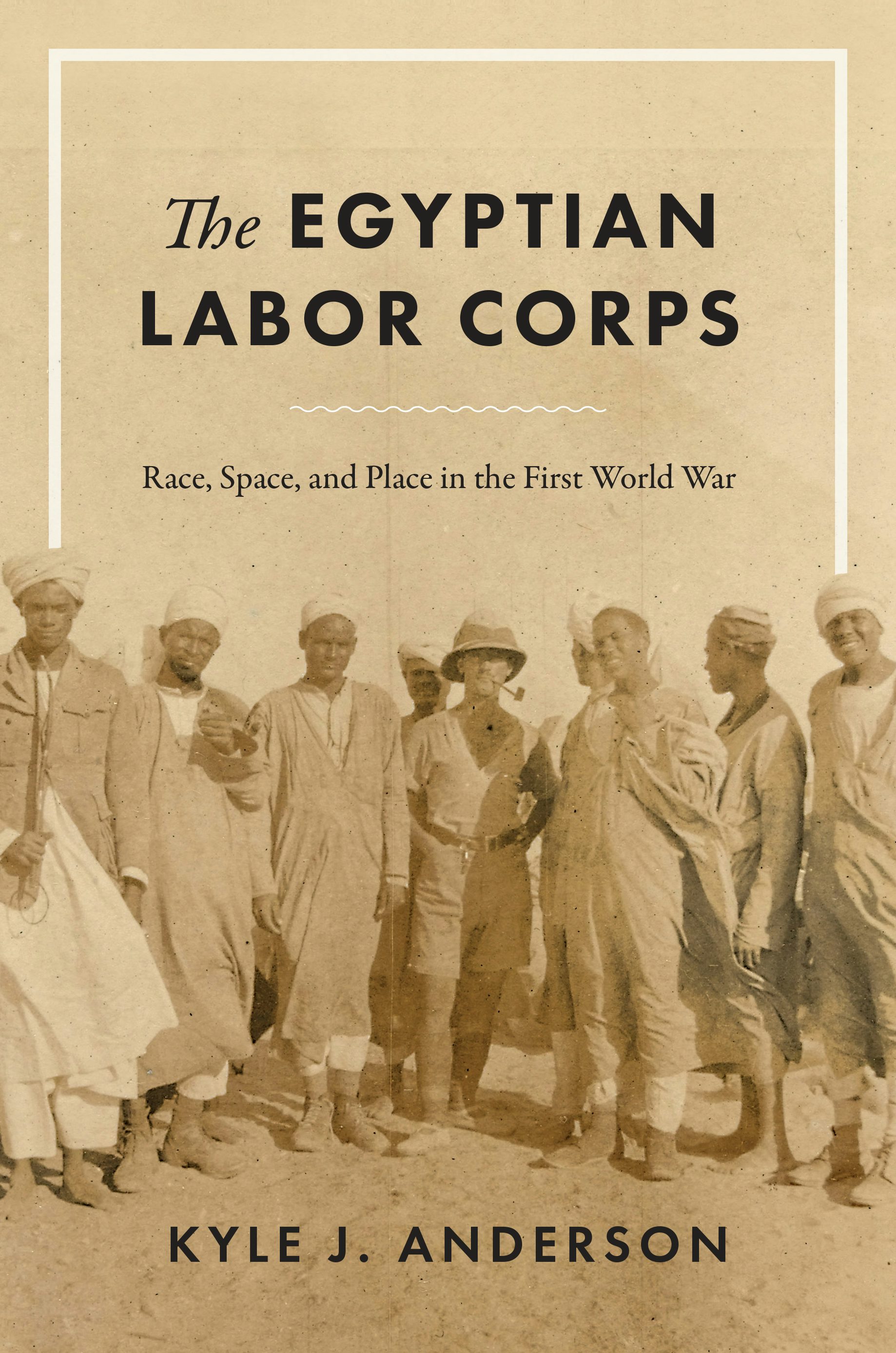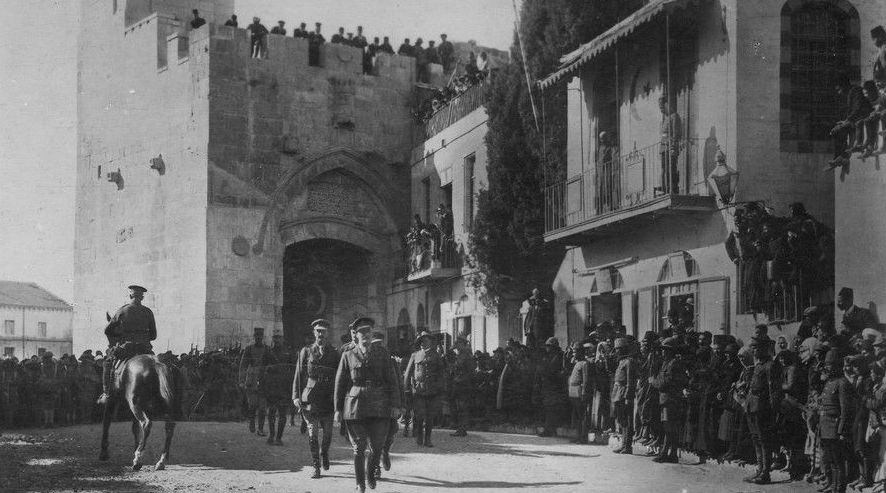The Egyptian Labor Corps and the Echoes of WWI
| In the aftermath of the First World War, the Egyptian streets rose up against British rule during a period of global anti-imperialism, and the voices of the 1919 revolution have echoed throughout Egyptian history ever since. In this first installment of our four-part series on "The Sound of Revolution in Modern Egypt," we consider how the First World War reshaped political consciousness in Egypt, as our guests Kyle Anderson and Alia Mossallam explore the experiences of the Egyptian Labor Corps and the sonic history of WWI. We examine the adventure, hardship, exile, and abuse Egyptian workers faced serving the British war effort, as well as how the war changed the society they returned to, in the words of one famous song from the period, "safe and sound." In discussing the popular songs of the war period that entered Egyptian national canon, our guests illuminate the ways in which shared songs can be modified and repurposed for new political contexts, drawing attention to the need for reconstructing the layers of context contained within some of history's earliest sound recordings.
 | Click for RSS Feed | 
|

|
In the aftermath of the First World War, the Egyptian streets rose up against British rule during a period of global anti-imperialism, and the voices of the 1919 revolution have echoed throughout Egyptian history ever since. In this first installment of our four-part series on "The Sound of Revolution in Modern Egypt," we consider how the First World War reshaped political consciousness in Egypt, as our guests Kyle Anderson and Alia Mossallam explore the experiences of the Egyptian Labor Corps and the sonic history of WWI. We examine the adventure, hardship, exile, and abuse Egyptian workers faced serving the British war effort, as well as how the war changed the society they returned to, in the words of one famous song from the period, "safe and sound." In discussing the popular songs of the war period that entered Egyptian national canon, our guests illuminate the ways in which shared songs can be modified and repurposed for new political contexts, drawing attention to the need for reconstructing the layers of context contained within some of history's earliest sound recordings.
Contributor Bios
 |
Kyle Anderson is an Associate Professor at SUNY Old Westbury and the author of The Egyptian Labor Corps: Race, Space, and Place in the First World War. His research has been funded by the Kluge Foundation, the Social Science Research Council (SSRC) and the American Research Center in Egypt (ARCE). His current book project, tentatively titled, Egypt and the Global Freedom Struggle: Failed Radicals in the Long Revolution, 1830s-1930s, looks at the role Egypt played as a node in global radical networks and argues that the specific form revolution took in 1918-1923 led to a narrowing of the horizons of Egyptian patriotic anti-colonialism in the 20th century. |
 |
Alia Mossallam is a cultural historian, educator and writer interested in songs that tell stories and stories that tell of popular struggles behind the better-known events that shape world history. For her PhD she researched a popular history of Nasserist Egypt through the stories and experiences of the popular resistance in Port Said (1956) and Suez (1967-1974) and the construction of the Aswan High Dam through the experiences of its builders and the Nubian communities displaced by it. As a EUME fellow 2017-21 of the Alexander von Humboldt Foundation, she worked on her book on the visual and musical archiving practices of the builders of the Aswan High Dam and the Nubian communities displaced by it. Her new project at EUME (2021-24), “Tracing Emancipation Under Rubbles of War”, retrieves the physical and political journeys of Egyptian and North African workers on the various fronts of World War I through the songs and memoires that recount their struggles. Some of her research-based articles, essays and short-stories can be found in The Journal of Water History, The History Workshop Journal, the LSE Middle East Paper Series, Ma’azif, Bidayat, Mada Masr, Jadaliyya and 60 Pages. An experimentative pedagogue, she founded the site-specific public history project “Ihky ya Tarikh”, as well as having taught at the American University in Cairo, the Freie Universität in Berlin, and continuing to teach at the Cairo Institute for Liberal Arts. |
 |
Chris Gratien is Associate Professor of History at University of Virginia, where he teaches classes on global environmental history and the Middle East. His first book, The Unsettled Plain: An Environmental History of the Late Ottoman Frontier, explores the social and environmental transformation of the Adana region of Southern Turkey during the 19th and 20th century. |
Credits
Episode No. 555
Release Date: 4 December 2023
Sound production by Chris Gratien
Sound Elements (by order of appearance): Naima al-Masriya and Seyyid Darwish - Khod al-Biza; Naima al-Masriya - Ya Aziz Aini; Seyyid Darwish - Zourouni Kulli Sana Mara; El Sharq wel Gharb; Chad Crouch - Charcoal; Sadak Berreshid (Lautarchiv); Seyyid Darwish - Salma Ya Salama; Dalida - Salma Ya Salama
Additional thanks to Brittany White
Release Date: 4 December 2023
Sound production by Chris Gratien
Sound Elements (by order of appearance): Naima al-Masriya and Seyyid Darwish - Khod al-Biza; Naima al-Masriya - Ya Aziz Aini; Seyyid Darwish - Zourouni Kulli Sana Mara; El Sharq wel Gharb; Chad Crouch - Charcoal; Sadak Berreshid (Lautarchiv); Seyyid Darwish - Salma Ya Salama; Dalida - Salma Ya Salama
Additional thanks to Brittany White
Further Listening
 |
Lucia Carminati | 551
9/28/23
|
Life and Labor on the Suez Canal |
 |
Salim Tamari | 367
7/17/18
|
The Great War and the Remaking of Palestine |
 |
Pascale Ghazaleh | 449
2/11/20
|
The Language of Protest in 19th Century Egypt |
 |
Yiğit Akın | 429
10/3/19
|
How War Changed Ottoman Society |
 |
Panayotis League | 463
5/3/20
|
The Journeys of Ottoman Greek Music |
 |
Aaron Jakes | 475
9/7/20
|
Nationalism and Capitalism in British-Occupied Egypt |
Images

"Landing Ammunition : the Egyptian Labour Corps landing boxes of ammunition from the steamers near Jaffa during the advance" by James McBey, 1917. Source: Imperial War Museum, London

Gravestone of Sabit Harun Mohamed. Adinkerke Military Cemetery, Belgium. Source: Wikimedia Commons

Men of the Egyptian Labor Corps working ont he docks of Boulogne, France, 1917. Source: Imperial War Museum, London.

Two men driving an ambulance camel, al-Arish, 1917. Source: Imperial War Museum, London

Men of the Egyptian Labor Corps unloading coal in Beirut, 1918. Source: Imperial War Museum, London.

A company of the Egyptian Labor Corps at Boulogne, France, 1917. Source: Imperial War Museum, London.

Women's protest during 1919 Egyptian Revolution. Source: Wikipedia
Further Reading

Anderson Kyle J. 2021. The Egyptian Labor Corps : Race Space and Place in the First World War. Austin: University of Texas Press.
Clément, Anne. “Rethinking ‘Peasant Consciousness’ in Colonial Egypt: An Exploration of the Performance of Folksongs by Upper Egyptian Agricultural Workers on the Archaeological Excavation Sites of Karnak and Dendera at the Turn of the Twentieth Century (1885–1914).” History and Anthropology 21, no. 2 (2010): 73–100.
_____. “À La Recherche Des Voix Des Fallahīn Dans Un Dossier d’archives Judiciaries Égyptiennes.” Ateliers d’anthropologie 26 (2012): 1–16.
Farid, Heba and Alia Mossallam. Finding Na’ima. Tracing Na’ima al-Masriyya beyond the silences of Egypt’s 20th century music industry” In: El Sadda, Hoda, ed Gendering the Arab Archive, American University in Cairo Press, Forthcoming.
Hoffmann, Anette, and Phindezwa Mnyaka. "Hearing voices in the archive." Social Dynamics 41.1 (2015): 140-165.
Lange, Britta. "Poste restante, and messages in bottles: Sound recordings of Indian prisoners in the first world war." Social Dynamics 41.1 (2015): 84-100.
_____. "Gefangene Stimmen: Tonaufnahmen von Kriegsgefangenen aus dem Lautarchiv 1915-1918." Kulturverlag Kadmos:(2019).
Ruiz, Mario. "Photography and the Egyptian Labor Corps in Wartime Palestine, 1917-1918." Jerusalem Quarterly 56 (2014): 52-66.
Mossallam, Alia. “'Ya ‘aziz ‘aini ana bidi arawah baladi...' Voyages of an Egyptian tune - from Estrangement at Home to Longing on the Fronts of WWI”. In: Gorman, Anthony, and Sarah Irving, eds. Cultural Entanglement in the Pre-Independence Arab World: Arts, Thought and Literature. Bloomsbury Publishing, 2020.
_____. “Strikes, Riots and Laughter. A close reading of Egypt’s Himamiyya Villagers experience of Egypt’s 1918 Peasant Insurrection”. In: LSE Middle East Paper Series (40), LSE Middle East Centre, London UK: 2020. URL: http://eprints.lse.ac.uk/id/eprint/106501
_____. “al wagh al akhar li-thawrit 1919 al-masriyya. Thawrat fallahi al-himamiyya” (The other side of the 1919 Revolution. The Revolt of the Himamiyya peasants). In: Bidayat Magazine, (23-24) August 2019.
_____. “We are the ones who made this dam ‘high’. A Builders’ history of the Aswan High Dam.“ In: Water history. Volume 6, Issue 4, 2014.
_____ and Adam Ben Kato, June 14, 2023 at The forum transregionale Studien, Berlin.











Comments
Post a Comment
Due to an overwhelming amount of spam, we no longer read comments submitted to the blog.